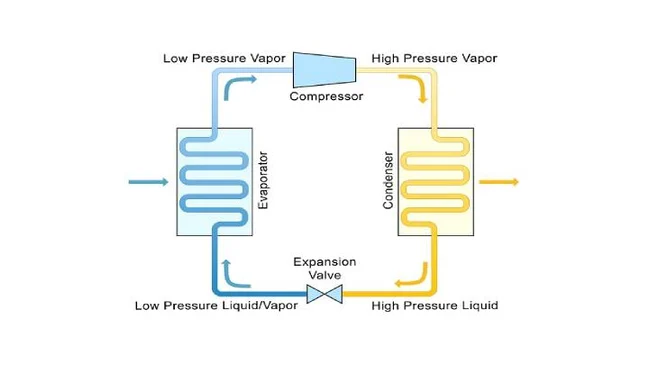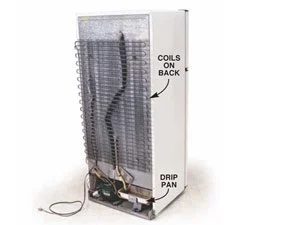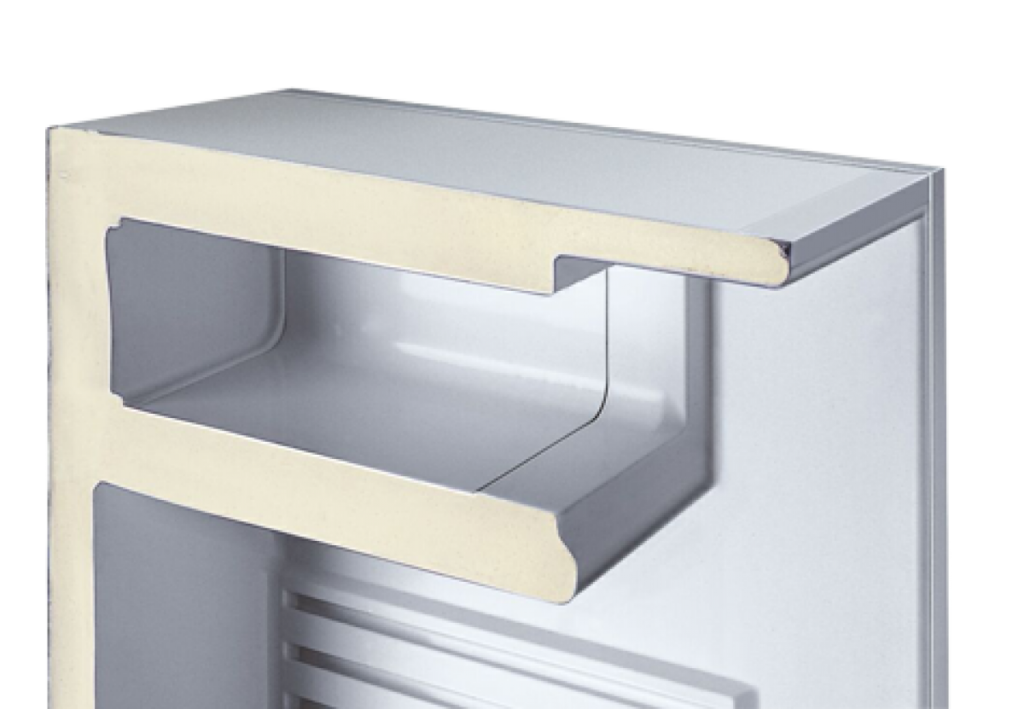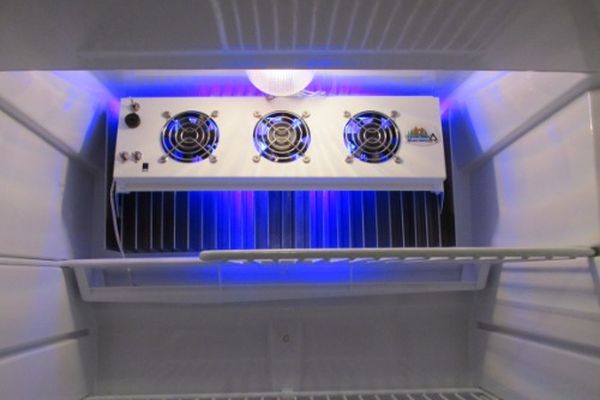A refrigerator, also known as a fridge, is an essential home appliance used to store food and beverages at cool temperatures.
The refrigerator operates by transferring heat from the inside of the insulated compartment to the external environment, keeping the contents chilled. Understanding how a refrigerator works can help you use it more efficiently and troubleshoot minor issues if they arise.
In this article, we will explore the basic components and functioning of a refrigerator. We will look at the refrigeration cycle, the process by which heat is absorbed and ejected from the fridge interior. We will also examine the major parts like the compressor, evaporator coils, condenser coils, thermostat, and more. Learning about the technology inside your refrigerator can help you make the most of this versatile kitchen appliance.
Refrigeration Cycle

The refrigeration cycle is the process that enables refrigerators to provide cooled air to the interior storage compartments.
This cycle leverages principles of thermodynamics – specifically the laws regarding heat transfer and changes in the phases of matter.
Here are the key stages in the refrigeration cycle that allows a fridge to chill items:
- Compression – The refrigeration cycle begins with the compressor. This is a pump that moves refrigerant in a gas state at low pressure to a high-pressure, high-temperature gas. As the refrigerant is compressed, it heats up significantly. Common refrigerants used are R134a, R600a, and R290.
- Condensation – The hot refrigerant moves into the condenser coils at the back of the fridge. As it passes through the coils, heat dissipates from the gas to the external environment. This cooling causes the refrigerant to condense into a high-pressure liquid.
- Expansion – After condensing, the liquid refrigerant passes through an expansion valve. This results in a abrupt pressure drop, causing the refrigerant to expand into a cool combination of liquid and gas.
- Evaporation – The cold refrigerant circulates into the evaporator coils inside the refrigerator compartments. As it evaporates from liquid to gas, the refrigerant absorbs heat from inside the fridge – this has a chilling effect.
- Repeat – The cycle then repeats, with the refrigerant gas returning to the compressor. Continuously cycling refrigerant through changes of pressure and phase results in the transfer of heat from inside to outside the refrigerator.
The refrigeration cycle relies on the compressor to circulate refrigerant and the coils/valves to alternate between heating, cooling, condensing, and evaporating the refrigerant. This cycle is able to extract heat from the fridge interior, moving it to the outside and resulting in chilled air.
Major Components
Several important components power the refrigeration cycle and allow a refrigerator to maintain chilled temperatures. Key parts include:
Compressor

As mentioned, the compressor is a pump that pressurizes refrigerant gas as part of the refrigeration cycle. It is powered by an electric motor and often called the heart of the refrigerator. The compressor raises the pressure and temperature of the refrigerant before sending it to the condenser.
Condenser Coils

The condenser coils are located at the back of the fridge and allow hot refrigerant gas to dissipate heat to the external environment. As the gas cools, it condenses into a liquid state still under high pressure. The condenser coils release built-up heat so liquefaction can occur.
Evaporator Coils

After the refrigerant loses heat and condenses, it flows into the evaporator coils typically lining the inside of fridge compartments. As the liquid refrigerant evaporates in the coils, it absorbs heat from the fridge interior. This heat absorption results in the chilling effect.
Expansion Valve

The expansion valve is located between the condenser and evaporator coils. It causes a pressure drop in the liquid refrigerant, resulting in rapid evaporation and cooling before the refrigerant enters the evaporator. This prepares the refrigerant to absorb maximal heat.
Thermostat

The thermostat monitors the temperature inside the refrigerator and controls the cycling of the compressor. When the interior temperature rises above a set point, the thermostat triggers the compressor to circulate refrigerant and lower the temperature.
Insulation

Insulation lines the fridge interior to contain the cooled air. Insulating foam and plastic provide a barrier to prevent external heat from entering the chilled compartments. This maintains stabilized temperatures.
Fans

Interior fans circulate and distribute the cooled air, while external fans help expel heat from the condenser coils, aiding efficient refrigeration. Proper air flow is important for an effectively operating refrigerator.
Refrigerants
An essential part of the refrigeration cycle is the refrigerant, the compound that alternates between gas and liquid states to absorb and release heat. Modern refrigerants have three key characteristics:
- Thermodynamic properties – Refrigerants have properties suitable for heat transfer, including high latent heat of vaporization to absorb heat and high condensing temperature.
- Low toxicity and flammability – Since refrigerants circulate within household appliances, they must have low toxicity and flammability for safe use.
- Stability – Refrigerants must be chemically stable and nonreactive to ensure a long working life.
Early refrigerators used dangerous refrigerants like ammonia, propane, and sulfur dioxide. Modern options like R134a, R600a, and R290 are designed to be much safer. Common choices include:
- R134a – Tetrafluoroethane has long been the most widely used refrigerator refrigerant due to its stability and safety. However, it is a potent greenhouse gas if released.
- R600a – Isobutane has excellent thermodynamic properties but is extremely flammable. It is commonly used in refrigerators in Europe and Asia.
- R290 – Propane is an efficient refrigerant but also has high flammability. Use is increasing globally in domestic refrigeration.
- R1234yf – Developed to replace R134a, this refrigerant has low global warming potential but can be combustible with air. Adoption is increasing.
The refrigeration cycle could not function without an appropriate working fluid like these refrigerants. Their phase changes and heat transfer abilities allow fridges to maintain cool temperatures. Environmental concerns are shifting demand toward more eco-friendly alternatives to traditional refrigerants.
Heat Transfer Methods
Refrigerators utilize several methods to transfer heat in order to cool their interiors:
- Conduction – Metal components like the compressor and coils conduct heat using their free electrons. As higher energy electrons collide with lower energy ones, energy is transferred. This allows heat to conduct through refrigerator components.
- Convection – Convection currents distribute refrigerant and air within a refrigerator. Fan motors initiate air flow assisting heat transfer. Convection currents enhance the circulation of refrigerant and chilled air.
- Radiation – The condenser coils emit infrared radiation to the surroundings, transferring heat out of the refrigerant. Small amounts of heat also radiate from items within the fridge toward the cold evaporator coils. This all helps dissipate heat.
- Condensation – As water vapor from air contacts the cold evaporator coils, it condenses releasing its latent heat. This phase change from gas to liquid assists in chilling the refrigerator interior.
- Evaporation – Liquid refrigerant evaporation on the evaporator coils absorbs significant heat from the fridge interior and is the primary source of cooling. Only high latent heat fluids can evaporate at such low temperatures.
The combined effects of conduction, convection, radiation, condensation, and evaporation allow heat to flow from areas of higher temperature (the inside of the fridge) to areas of lower temperature (the external environment). This one-way heat transfer results in the cooling effect responsible for a properly functioning refrigerator.
Impact on Food
Refrigeration provides several key benefits for preserving foods:
- Slows spoilage – Refrigeration slows the major causes of food spoilage – microbial growth and enzymatic chemical reactions. The cold temperatures delay spoiling.
- Extends freshness – Keeping food chilled extends its freshness. Refrigeration maintains optimal texture, color, moisture, and flavor longer.
- Retains nutrients – Some nutrients in foods slowly degrade over time. Refrigerating fruits, vegetables, and other produce prolongs retention of vitamins.
- Inhibits pathogens – Cold temperatures suppress the spread of dangerous microbial pathogens. Refrigerating cooked foods prevents harmful bacteria like salmonella from multiplying.
- Enables food transport – Shipping and transporting perishable items would not be possible without refrigeration. Chilled storage allows global distribution of foods.
Proper refrigeration is key to maximizing these benefits:
- Set temperature between 34-40°F. Higher than 40°F allows more microbial growth.
- Organize items to allow cool air circulation – do not overstuff compartments.
- Quickly return items to the fridge after use to avoid temperature spikes.
- Monitor temperatures with a thermometer and adjust as needed.
- Clean regularly to prevent microbial growth on surfaces.
Impact on different food groups:
- Fruits/vegetables – Refrigeration preserves vitamins, antioxidants, texture, and taste in produce. Stores at high humidity to avoid dehydration.
- Dairy – Essential for dairy to inhibit microbial growth. Storing at optimal temperature preserves freshness and prevents spoiling.
- Meat – Refrigeration greatly slows meat spoilage. Must monitor temperature closely as meats are prone to pathogen growth.
- Leftovers – Quickly chilling cooked foods via refrigeration inhibits dangerous microbial growth and prevents foodborne illness.
Troubleshooting Issues
While refrigerators are designed to operate reliably, common issues can arise:
Lack of cooling
If the interior temperatures are too warm, it likely indicates a problem with the refrigeration cycle. Potential causes include:
- Compressor failure – The compressor may fail to pressurize refrigerant. Compressor issues are a leading cause of cooling problems.
- Loss of refrigerant – A leak can cause low refrigerant levels and inadequate cooling. Checking for leaks near the compressor is important.
- Condenser coil problem – Dirty or damaged condenser coils can prevent proper heat dissipation during the refrigeration cycle.
- Thermostat malfunction – A faulty thermostat may fail to trigger the compressor to maintain set temperatures.
Food freezing
Items freezing in the refrigerator compartment indicate temperatures set too low. Causes include:
- Thermostat set incorrectly – Lowering the temperature set point too much on the thermostat can lead to freezing.
- Failed thermostat – If the thermostat fails, it may lose the ability to regulate temperature.
- Low refrigerant – Improperly charged refrigerant can lower temperatures excessively.
Excess moisture
Humidity and condensation inside the fridge can lead to spoiled food and problematic mold growth. Contributing factors are:
- Door seals leaking – Faulty door gaskets allow cold air leakage and moisture ingress.
- High ambient humidity – External humidity migrating into the fridge increases condensation.
- Drainage issues – Clogged defrost drains prevent water removal, raising humidity.
Noisy operation
Unusual noises like rattling or buzzing may indicate loose components or failing parts:
- Compressor mount – A loose compressor can vibrate against the chassis causing noise.
- Internal fan – A damaged or unbalanced fan motor will generate noise.
- Loose parts – Check for any loose shelving or components rattling inside.
Troubleshooting fridge problems begins with observing symptoms and systematically checking key components like the compressor, coils, thermostat, door seals, and refrigerant charge. Diagnosing issues quickly can prevent food spoilage. Professional repair may be needed for major component failure.
Key Takeaways:
- Refrigerators create a cooled interior by continuously cycling refrigerant through changes in pressure and phase to absorb and release heat.
- Key components in refrigeration are the compressor, condenser coils, evaporator coils, expansion valve, and refrigerant.
- Refrigeration relies on heat transfer via conduction, convection, radiation, condensation, and evaporation to chill the interior.
- Storing food in the 35-40°F temperature range provided by refrigeration preserves freshness and nutrients while inhibiting microbial growth.
- Refrigerator problems typically involve the refrigeration cycle, temperature regulation, humidity levels, or noisy/failing parts.
Conclusion
The refrigerator is an often overlooked modern marvel – the complex refrigeration cycle leverages principles of physics to transform electricity into reliable food preservation. Components like compressors, refrigerant, and conductive coils coupled with thermodynamic phase changes enable the continuous flow of heat out of refrigerated compartments.
Understanding how a refrigerator maintains chilled temperatures illuminates the importance of refrigeration to the food supply chain. The simple act of storing milk or leftovers in the fridge takes advantage of pioneering science enabling the safe transportation and storage of perishable foods.
While refrigerators generally operate robustly, their performance depends on the coordinated functioning of electrical, mechanical, and chemical components. Troubleshooting issues promptly preserves food and prevents waste.
With increasing reliance on refrigeration in homes and commerce, the technology behind it merits appreciation as an essential service in modern society.
Read also:

